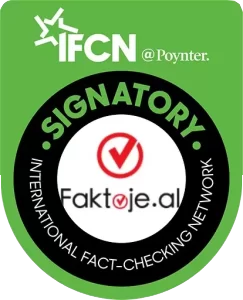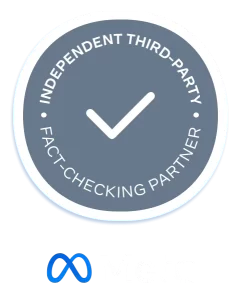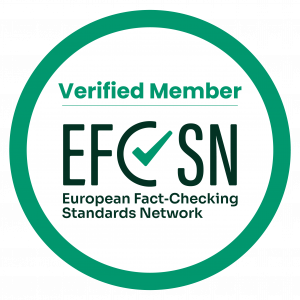Aimona Vogli
Faktoje presented the findings of the annual monitoring for 2024, regarding the keeping of promises, transparency at the local level and the use of the social fund.
In addition to sharing the findings, the event brought together local government institutions, media, organizations and various stakeholders working in Albania to improve citizens’ access to public information in the municipality.
Transparency
Over the past five years, municipalities in Albania have made strides in improving transparency by publishing programs and sharing more information with citizens. However, challenges remain when it comes to fulfilling the promises made by mayors following electoral campaigns.
As part of the ’40 Promises, 10 Municipalities’ project, Faktoje has been monitoring the performance of numerous local government institutions across Albania. This initiative is supported by the National Endowment for Democracy (NED). The municipalities being monitored are Shkodra, Lezha, Elbasan, Korça, Dibra, Durrës, Vlorë, Fier, Kavaja, and Saranda.
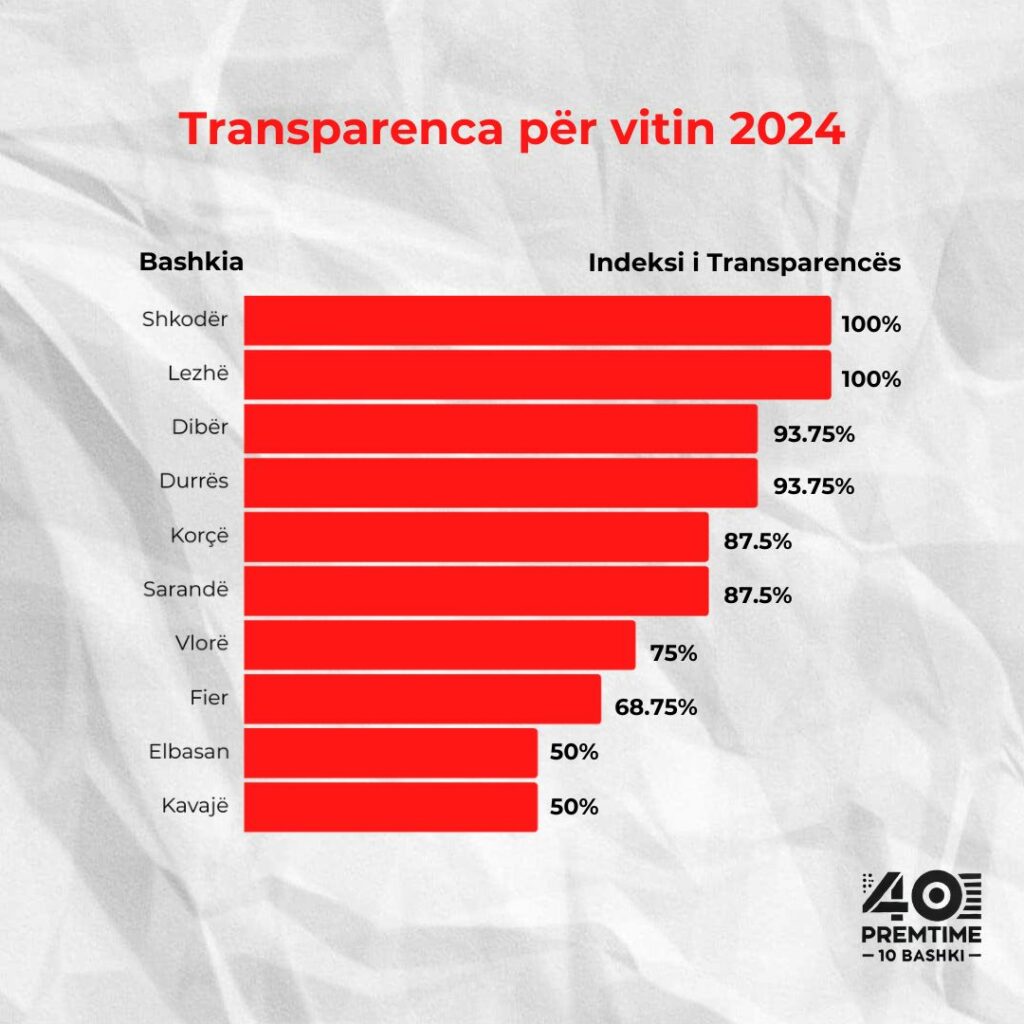
Promises
The analysis indicates that out of the 40 verified promises across the 10 municipalities, only 5 have been fully kept, 14 have been partially fulfilled, and 21 promises have not been realized. This results in 52% of the monitored promises remaining unfulfilled. Shkodra and Lezha stand out with the highest level of transparency, having achieved 100% compliance with the legal transparency obligations.
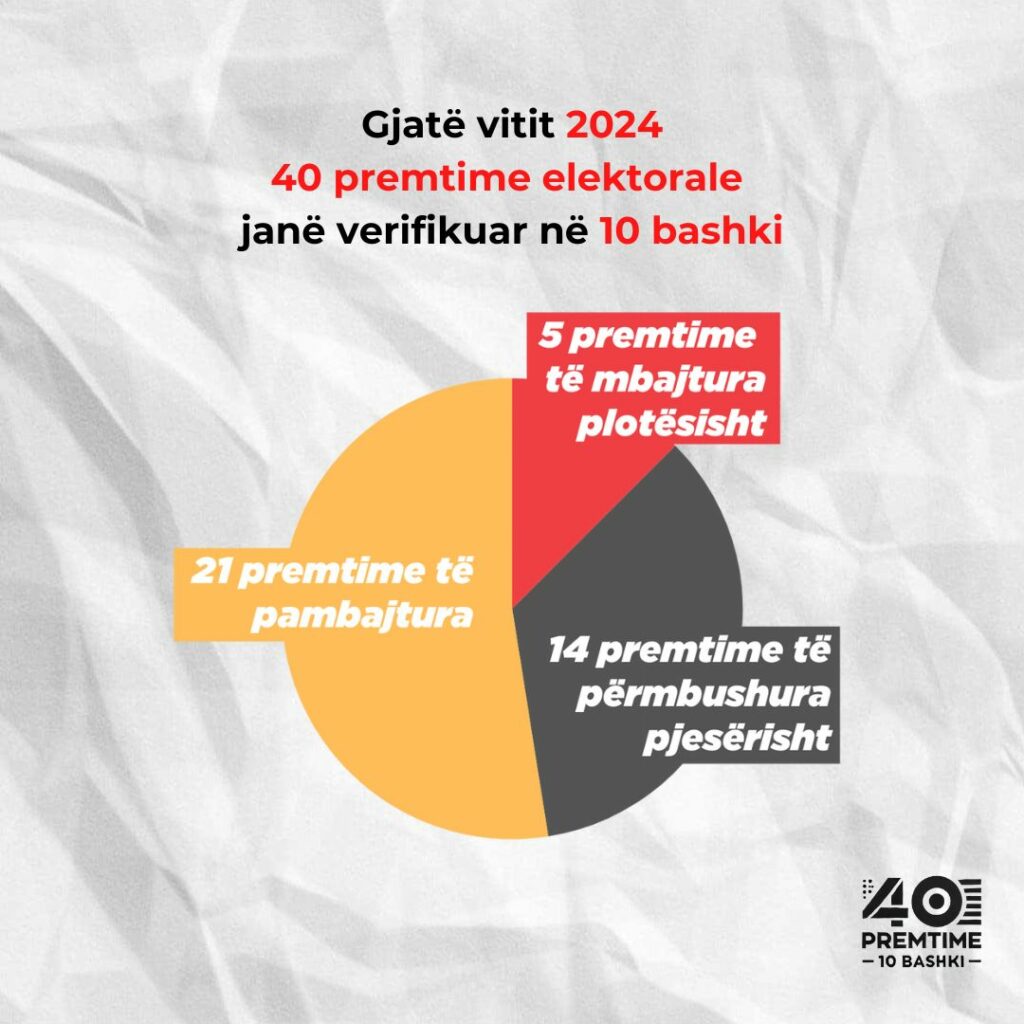
5 Years in Numbers
Between 2019 and 2024, Faktoje monitored 135 promises made by mayors across 21 municipalities. The results indicate that 76 promises were not fulfilled, 34 were partially implemented, and only 25 were fully realized.
The municipalities of Shkodra and Lezha stand out for their strong performance, with notable improvements in transparency and accountability to the public. Meanwhile, the municipalities of Durrës, Elbasan, and Vlorë remain challenging in this regard. The monitoring has shown that the mayors of these municipalities have failed to fulfill a significant number of promises, primarily related to infrastructure and public services.
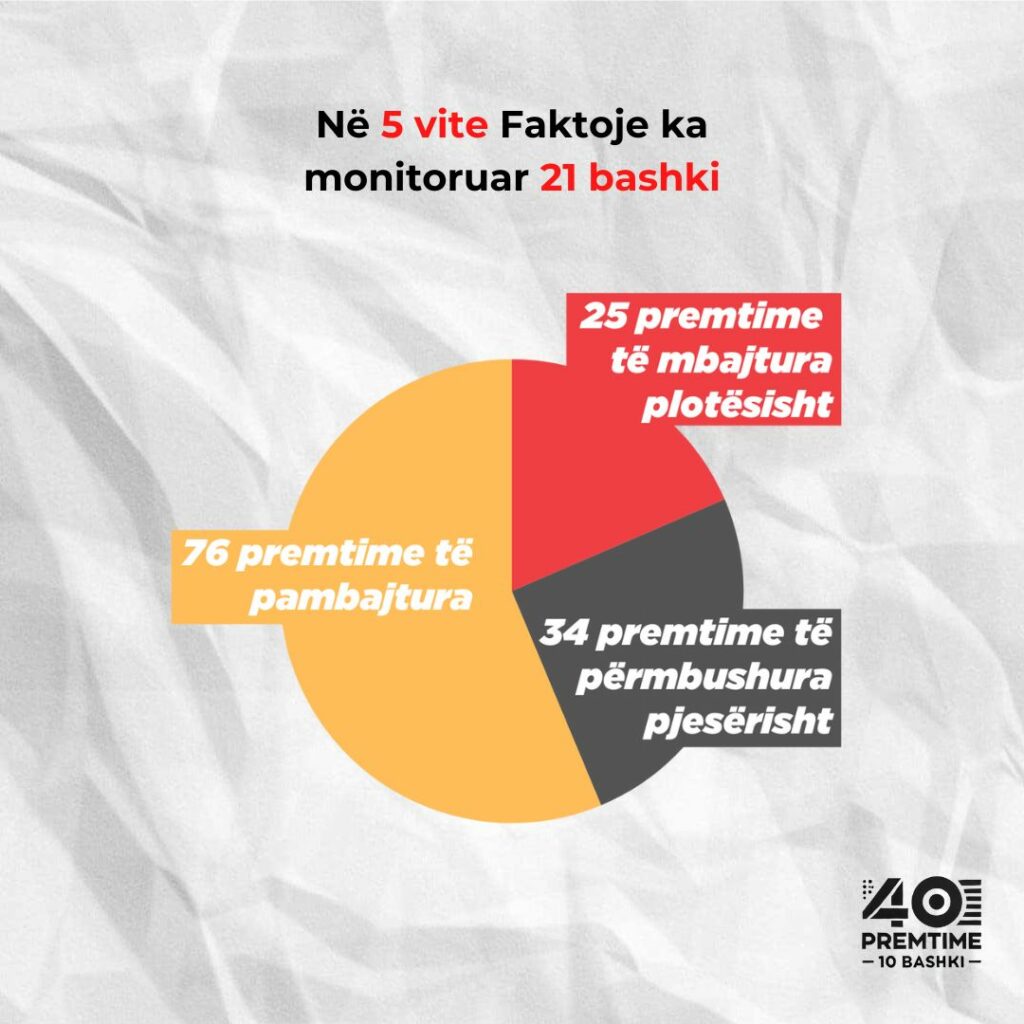
Social Fund
For 2024, Faktoje expanded its monitoring to include the use of the Social Fund by Albanian municipalities. A total of 61 municipalities were examined, revealing significant challenges and discrepancies in the way the fund is managed.
A key issue is the lack of transparency regarding the progress and implementation of the Social Fund. At both the central and local government levels, no institution has made public detailed information on the distribution and utilization of these funds over the years. This lack of transparency creates a significant gap in monitoring the fund’s effectiveness and complicates the analysis of its impact on improving social services.
Another concern is the absence of long-term planning by the municipalities to ensure the sustainability of social services. According to the verifications conducted, no municipality has allocated funds in their medium-term budgets (2025-2027) to continue operating services financed by the Social Fund once the financial support period ends.
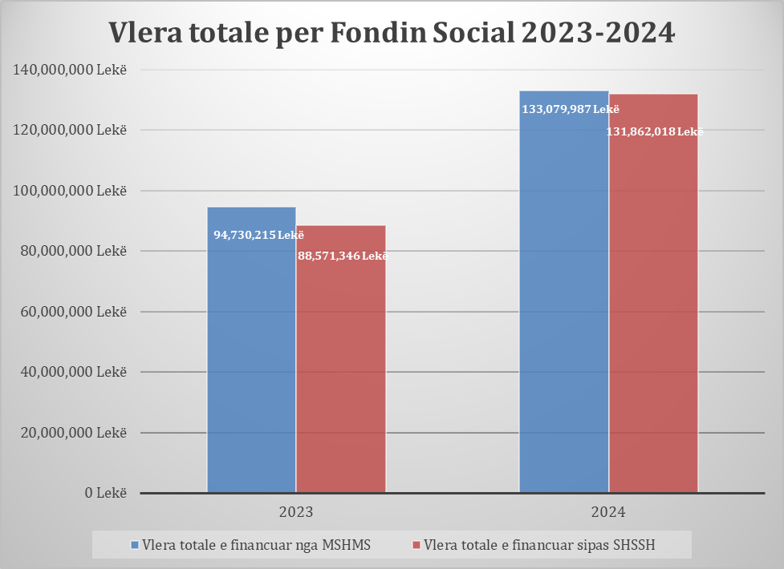
There are notable discrepancies between the reported financial figures for the Social Fund in 2023 and 2024, as provided by the Ministry of Health, the Social Services Agency, and the municipalities.
According to the Ministry of Health and Social Services (MSHMS), the total amount allocated for the Social Fund in 2023 was 94,730,215 Lek, while for 2024, it increased to 133,079,987 Lek. However, there is a mismatch between the total amounts reported by the Ministry and the funds allocated to each municipality. Specifically, for 2023, the total amount allocated to municipalities is reported to be 84,866,879 Leke, and for 2024, it is 131,232,355 Leke. Additionally, according to the Social Services Agency’s data, the amount allocated for 2023 was 88,571,346 Leke, and for 2024, it increased to 131,862,018 Leke.
Monitoring Process
The monitoring carried out by journalists and civil society activists aims to evaluate the level of transparency in local government institutions, encourage the sharing of information with the public, and increase accountability regarding decision-making processes and management within these institutions. The monitoring methodology includes budget analysis, public procurement oversight, and field observations. Key transparency indicators include the transparency program, public consultation processes, and adherence to the law on the right to information.






